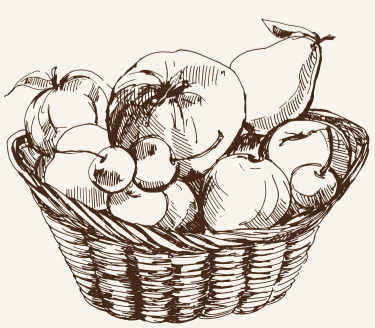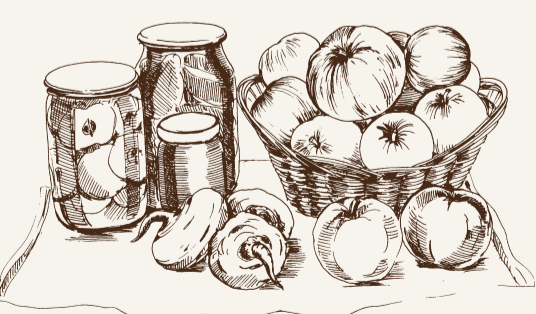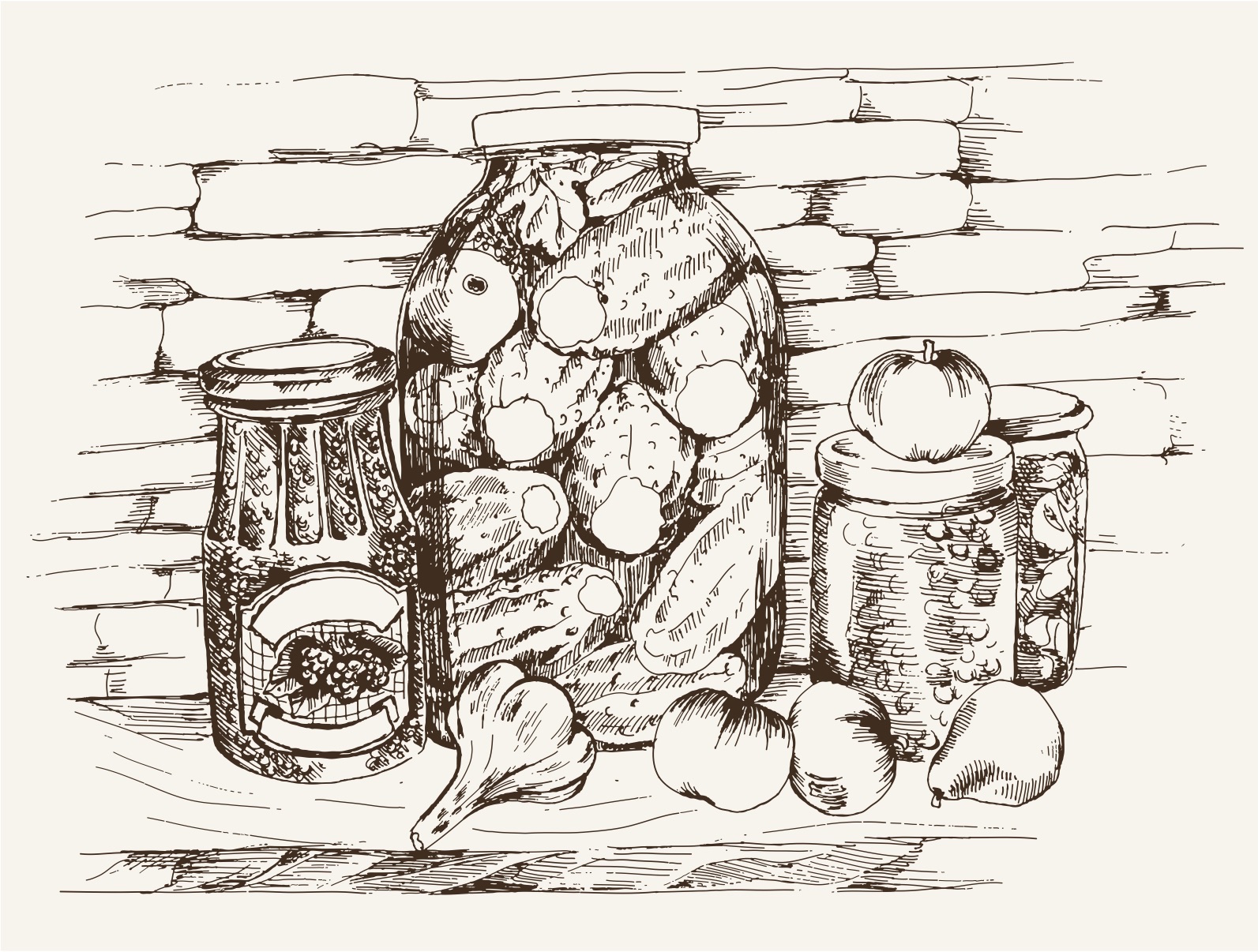Rising to the Challenge of Being a Locavore During the Winter Months
Lo.ca.vore: noun, a person whose diet consists only or principally of locally grown or produced food
Living the life of a locavore in an urban environment is a lofty goal—and also a challenge. It requires a lot of planning. It is especially important to remember this during the cold winter months when nothing is growing in our Bronx gardens, and almost all of the farmers markets and community-supported agriculture (CSA) harvest subscription programs have packed up for the season. We’ve practiced this philosophy for a few years now and have found that there are some simple rules:
1. Plan Ahead!
Throughout the season, farmers markets and CSA shares are brimming with produce that needs to be used fresh but they also offer many items that can be “put away” in the freezer or canned for use later:
Greens like kale, collards and chard can be trimmed, rinsed and spun dry before tightly stacking and rolling the leaves to fit in a freezer bag. Defrosting the greens breaks down the cell walls, making them nice and tender when you’re ready to use them.
To preserve any winter squash, scoop out seeds, then steam and food mill the flesh before freezing and use it for soup, to stuff homemade ravioli or served mashed as a side dish.
Sweet peppers can be roasted, peeled and frozen. Take them out and toss with garlic and olive oil to use on sandwiches. Fresh peppers can be cut, cleaned of seeds and thrown in a freezer bag too, but these need to be used early in the winter. Smaller hot peppers can be frozen whole!
Cucumbers are not the only vegetables that can be turned into pickles. I have made pickles from zucchini, turnips, daikon radishes and onions. Experiment with making kimchi or sauerkraut. Swap and share with friends during the holidays!
Fresh herbs can be mixed with butter and frozen. Thawed out, they can be used to make a simple rice or pasta dish more flavorful or tossed into a homemade soup to give it a fresh kick.
Tomatoes can be preserved in many ways for use as pasta or pizza sauce or mixed with stock for tomato soup.
Consider investing in a dehydrator to dry mushrooms, hot peppers and fruit. You can also use your oven at the lowest setting, preferably in the range of 150 to 190 degrees, and check at least once an hour until you trust your oven.
In short, a fully stocked freezer and pantry are essential.
 2. Know What is in Season!
2. Know What is in Season!
Cabbages, cauliflower, root vegetables, winter squash, dried beans, apples and pears will make up the bulk of what is available in season from local and regional farmers. Greens such as arugula, baby spinach and baby kale can also be found. Check provenance when you can and avoid produce from the southern hemisphere.
3. “Local” Doesn’t Mean Just Produce!
Regional mills are grinding flour from a variety of grains. Now is the chance to try New York State–grown flour, cornmeal, polenta, freekeh, barley and quinoa.
Growers are stocking dried beans in many heirloom varieties. Fresh dried beans cook up much quicker than the plastic bagged beans we find in most grocery stores and have a creamy consistency that sticks to your ribs and satisfies in braised dishes.
Artisanal cheeses are becoming mainstream, and many local stores are beginning to keep them in stock.
4. Use Meat as a Seasoning!
It’s pretty easy to eat a meat-free diet during the summer, but the cold winter months call for more substantial food and an opportunity to use the stove for hours on end. For my fellow unapologetic carnivores, sustainably raised meat is seasonal too. Many farmers markets now include meats from livestock raised on pasture, but it is still not easy to find in standard grocery stores and, for many, is priced much too high. Meat may be the one item that many locavores have to make compromises on, simply from an economic perspective. For our family’s budget, we don’t use meat as the main course:
Instead of an eight-ounce steak, a smaller three- or four-ounce steak is served with a side of roasted potatoes and sautéed greens or cut up in a stir-fry.
Try less-expensive cuts meant for braising and add to it seasonally available vegetables and beans to serve over warm polenta. This is a great way to stretch a one-pound roast over a number of meals.
Fresh sausages can be roasted and added to braised cabbage or potatoes and peppers, creating many meals when supplemented by a loaf of fresh crusty bread.
5. Compromise is OK!
Produce such as citrus, avocados, nuts and olives will never be local. Neither will olive oil. Or salt or many of the culinary spices we use. If you can, try to purchase citrus fruits from Florida, but finding good-quality domestic products can be tricky. So don’t sweat it!
6. Find good sources!
Winter farmers markets are becoming more popular but still not convenient to all of us in the Bronx. Winter CSA shares are a great way to continue receiving local produce, albeit it is sometimes frozen.Year-round “CSA extras” programs utilize a central distribution hub to make monthly deliveries direct to consumers. Typically, extras programs cover everything except vegetables and fruit—providing opportunities to purchase meat, dairy, bread and a variety of prepared foods

Being a locavore is a reaction against a broken food system. It recognizes the importance of eating a diet of locally raised food but must include the regional market, the national market and the need for importing food as well. It forces you to consider your purchases; it empowers you to become more involved in what you eat by meeting and talking to the people who are growing, raising and preparing your food.





